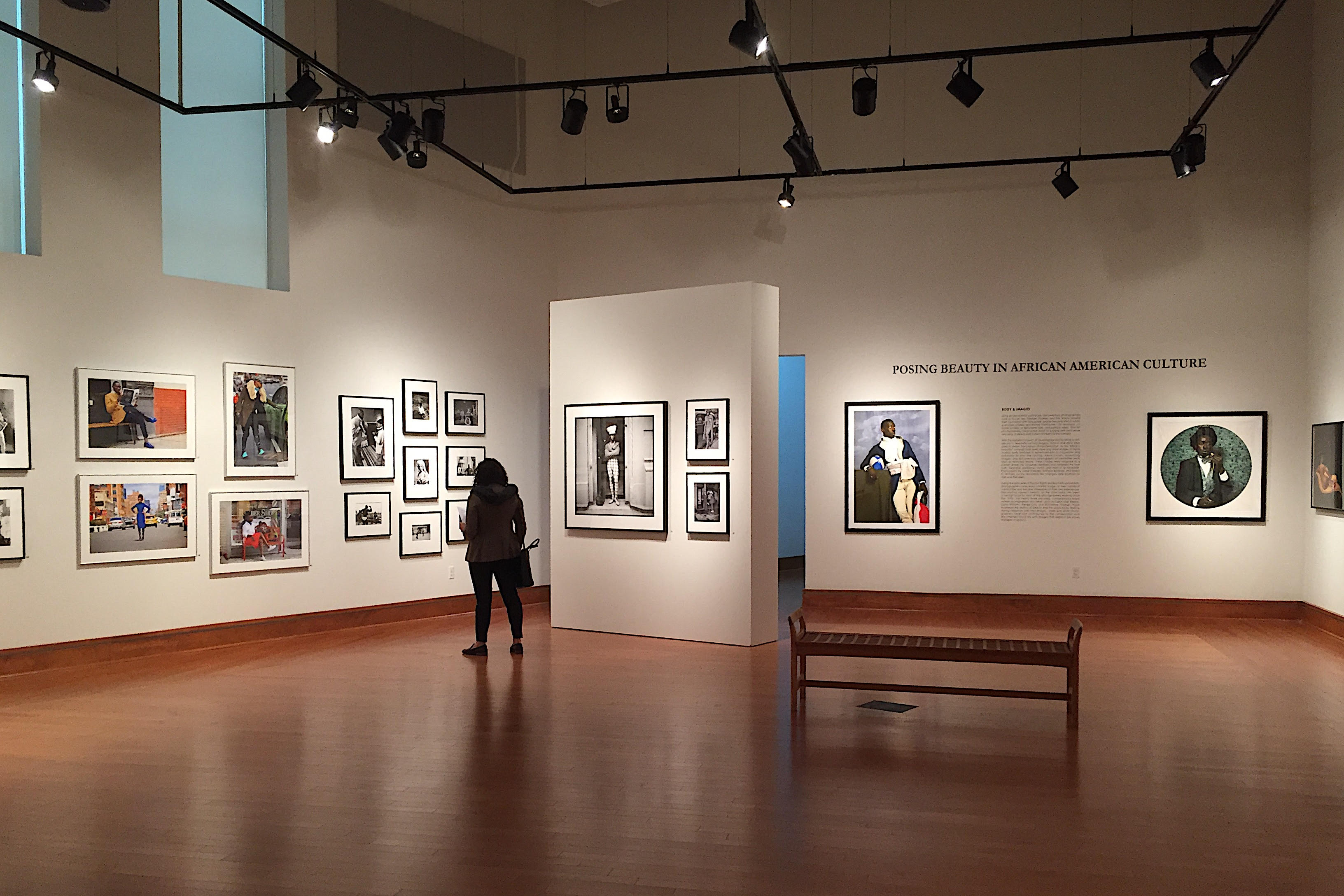The black people on the walls of the David C. Driskell Center are remarkably fashionable. They’re dressed in zoot suits, corsets, furs and poofy blouses, some wearing nothing. There’s the continuity of everyday life — a group of young women sitting on the steps of what is now Clark Atlanta University, a man in Harlem getting into a cab — and the charm of iconic black celebrities, such as Denzel Washington, Marvin Hagler, Michelle Obama and Serena Williams.
“Posing Beauty in African American Culture” — one of the largest exhibits the center has hosted to date, with 90 pieces by 51 artists — aims to highlight the positive ways in which black people have been represented in avenues such as fashion and advertising. The oldest piece dates back to 1898.
“My hope is that [visitors] will understand that beauty is not only something to please the eye, but it also can have very strong social, political messages,” said Dorit Yaron, deputy director of the center.
The exhibit is split into three sections. “Constructing a Pose” explores the way people decide to show themselves and the dynamic between a photographer and their subject. “Body and Image” analyzes beauty through the body. “Modeling Beauty and Beauty Contests” is a look at how mass media and culture shape our definitions and perceptions of beauty.
“Posing Beauty” was curated by Deborah Willis, the chairwoman of the photography and imaging department at New York University’s Tisch School of the Arts.
Aside from two video pieces, the exhibit is composed of photographs, with black women prominently featured. There is a mock-up advertisement for Dark n’ Lovely relaxer, where a quote from poet Audre Lorde reads, “Is your hair still political? Tell me when it starts to burn.”
On the way out of the gallery, there is a corkboard on the wall where visitors are encouraged to write their thoughts and feelings about the center’s latest exhibit on a neon-colored piece of paper. “Inspired,” reads one. “Empowered,” reads another.
At the very back of the right wall, in the “Body and Image” section, there is a photo by Renee Cox of a nude woman elegantly sitting in a mustard sofa chair with her back facing the camera. It’s Baby Back from Cox’s series, American Family, and it’s one of Yaron’s favorites.
“This is a dialogue within art history,” Yaron said. “Because many artists have photographed or painted or drew their models this way. She is inserting an African-American figure into a dialogue about the female body that normally is portrayed over the years by white models or by white artists.”



